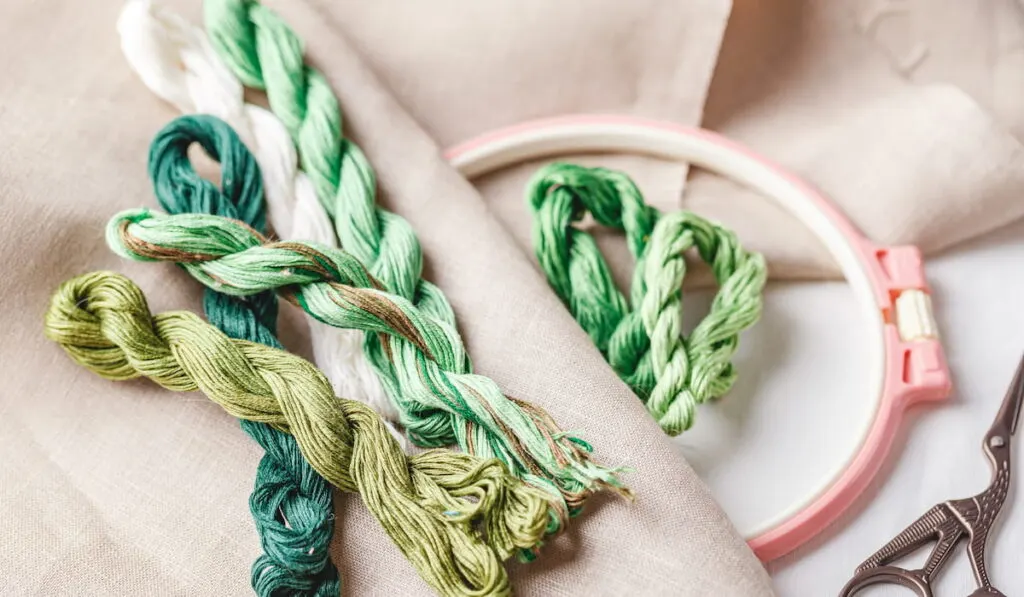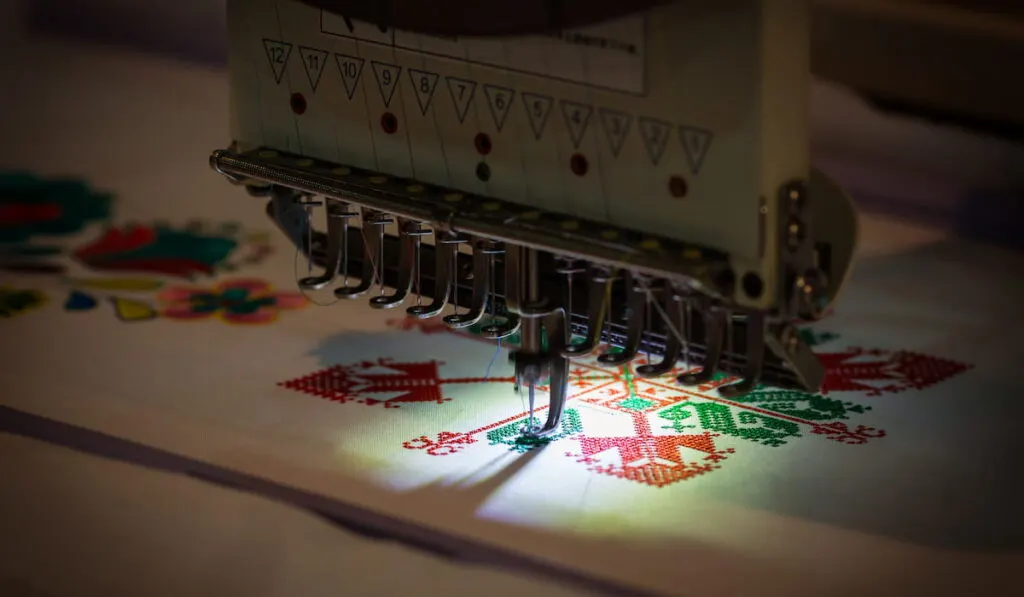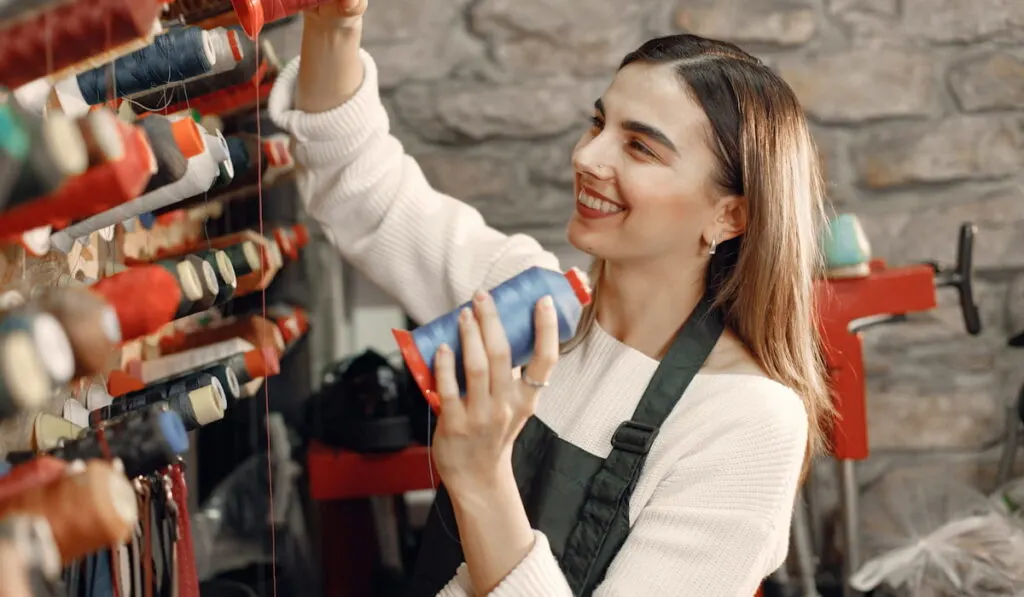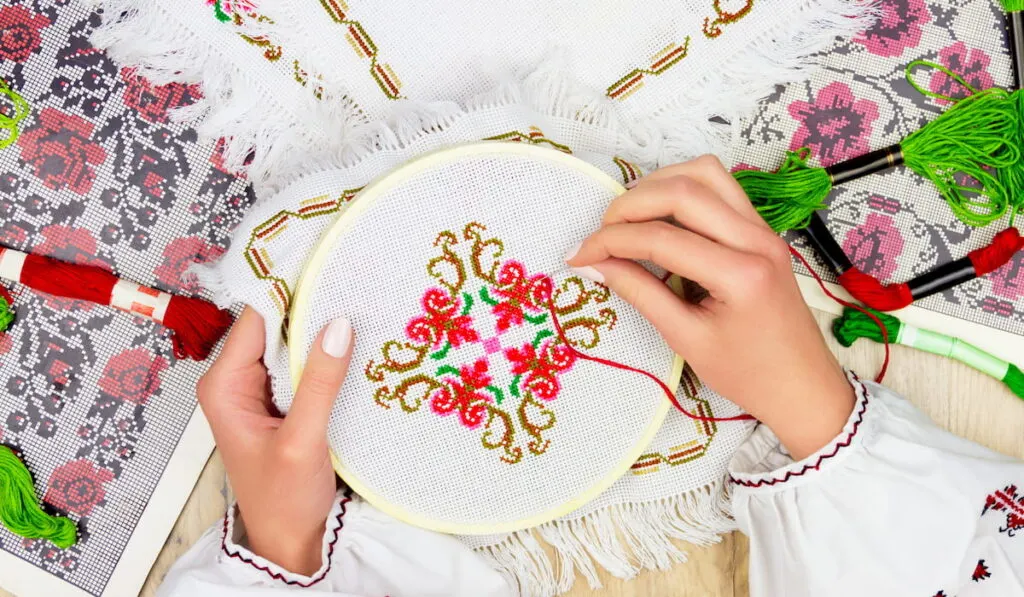All threads are not the same, there are many types to choose from depending on your project. You’ll find that the varieties available are what makes sewing beautiful.
Of the many things that go into sewing, the thread one uses is vital. Use the wrong type of thread for your fabric, and you will not be pleased with the outcome.
Imagine you are given an embroidery thread. But you are not sure if it is suitable for regular sewing.
Can you sew with embroidery thread?
Yes, embroidery thread can be used for sewing beyond embroidery. Ultimately, embroidery thread is designed specifically for embroidery, but it lends itself nicely to many other sewing uses.

Embroidery thread has a high level of sheen to it, as its looser twists contribute to the said luster.
Embroidery thread is thicker than regular sewing thread. It typically goes through fabric multiple times in the creation of a design, hence, it is made to be extra thick. However, this does not affect its use for regular sewing.
We will shed more light on what you can and cannot sew with embroidery thread in subsequent paragraphs.
Can You Sew With Embroidery Thread?
Yes, you can sew with embroidery threads. Even when they have been designed for different kinds of projects, threads will ultimately remain threads.
Always be observant when using embroidery thread. Although it is strong, it might not have the strength to handle the task you intend to use it for.
Can You Use Embroidery Thread In a Sewing Machine?
Yes, you can use embroidery thread in a sewing machine. There are several types of embroidery thread. Some of these threads have been specifically designed to be used in sewing machines.
Cotton, rayon, and polyester embroidery threads are some of those types, and they are usually stronger than the normal embroidery threads. Rayon, for instance, gives your fabric some extra toughness and can be used for finishing.
When you want to use embroidery thread in your sewing machine, bring down the feed dog just a little. When threading the machine, ensure the bobbin is full and put it back in its place.

Is Embroidery Thread Strong?
Compared to regular sewing thread, embroidery thread is strong. This is so because it usually runs through fabric multiple times.
Embroidery thread is made from various types of materials and can be either synthetic or natural.
Of the various types, the most common ones are cotton, polyester, specialty, silk, and rayon. Each one is more suited for certain applications than others.
Rayon and polyester are two of the most common synthetic fibers. Polyester is the tougher of the two.
Is Embroidery Thread Thicker Than Sewing Thread?
Yes, embroidery threads are thicker than sewing threads. They come in various sizes, ranging from 30 to 60. Within this range, 30 is the thickest thread size, and 60 is the thinnest thread size.
For regular threads, sizes range from 40 to 50, with 40 being the thickest.

Can You Use Embroidery Thread to Sew Clothes?
Yes, you can sew clothes with embroidery threads. Although you have to be selective when using this thread.
Rayon threads, for instance, become weaker than regular sewing threads when they are exposed to water.
Wearing clothes made from rayon threads in the rain will not be ideal. This is something to note when you choose the thread you will use to sew clothes.
Embroidery thread is not designed for regular clothing. It is made for sewing on designs. If the embroidery thread is finer than the regular thread, it will cause more lint than the regular threads. These are some things to consider before you use embroidery thread for sewing clothes.
Can You Use Embroidery Thread for Quilting?
Yes, you can use embroidery when quilting. All you need to do is follow the rules guiding other quilting threads when quilting. Below are the rules for this procedure:
- You should use only about 18 inches of thread each time. Longer pieces of the thread may begin to shred as you pull them through the fabric repeatedly.
- To avoid creating any weak spots, you should try moving the needle down the thread.
- Always ensure you have a thread conditioner close by when sewing. This helps reduce any tangling you might encounter when sewing.
- Adding a little vinegar to the wash load helps prevent color bleed. If you have time to spare, carry out tests on the thread to find out if they fade or bleed. If they do, avoid using them.
With these simple rules, you should be able to carry out quilting projects with embroidery threads.
Can You Use Embroidery Thread for Hand Sewing?
Yes, you can hand sew with embroidery threads.
Using embroidery threads for hand sewing is a perfect way to add different styles and designs to your outfit.
You can also use it to make stylish finishes for your garments.
Can You Use Embroidery Thread for Cross-Stitching?
Yes, you can use embroidery threads for cross-stitching.
If you use a 14- or 16-count Aida cross-stitch method, using a 2-strand stranded embroidery cotton thread will give you a good outcome.
With the range of embroidery threads available, your choice of thread is dependent on the project type. The choice of thread also depends on the look you want and how durable you want it to be.
All you need from the embroidery thread in this situation is strength and durability.

7 Tips for Hand Sewing With Embroidery Thread
If you are hand sewing with embroidery threads for the first time, here are some tips to assist you:
- The first thing to do is prepare your thread.
- Since embroidery thread tends to knot if you leave it on the skein, remove the wrapping and form a loop with it.
- Pull the skein at one end and trim it. Using the length of your forearm from the fingertips to the elbow is a good rule of thumb for measuring thread length.
- Next, separate the strands of thread by pinching the embroidery thread plies together and pulling out one strand until it is completely separated.
- Repeat this action for every strand until you separate all of them. You can now group your required number of strands and thread your needle.
- With regular threads, you use a knot. When using embroidery threads, you anchor the first stitch in other stitches. For the tail of the first stitch, anchorage should be at the backside of the fabric.
- When you are done with the sewing, running out of thread, or just looking to change colors, weave the needle underneath some stitches on the backside. This helps to secure the end of the work before you trim the thread.
With these tips, you should be able to master sewing with embroidery threads without any problems.
Final Take
Embroidery thread has several uses in line with what we have discussed. This thread might not be ideal for every sewing project, but it can prove useful when applied to different projects. The biggest advantage that comes with using embroidery thread is that there are various colors you can pick from.
